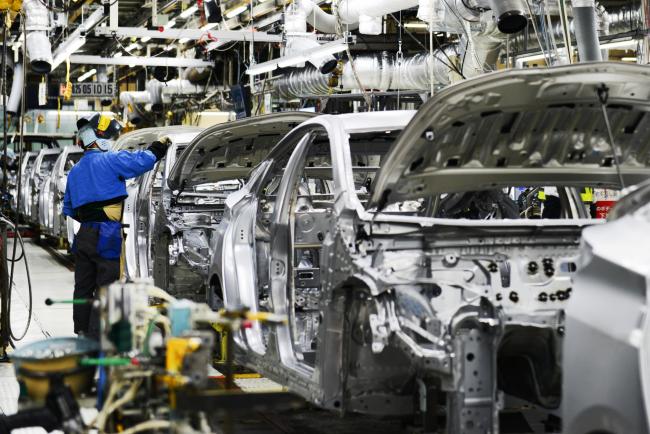(Bloomberg) -- Japan’s factory output fell by the most in nearly seven years in January, badly missing forecasts. Retail sales also dropped more than expected. Even so, the economy’s export-driven growth trend remains intact.
|
Highlights |
|
Key Takeaways
Industrial production to meet export demand has supported eight straight quarters of economic growth, Japan’s longest expansion in nearly three decades. While output is forecast to have rebounded sharply in February, the economy ministry slightly downgraded its assessment of production from "recovering" to "gradually recovering." The decline in retail sales, while attributed at least partly to poor weather, underscores that Japanese consumers remain cautious about spending
|
What Our Economist Says... |
| An unexpectedly large decline in January partly reflected a pullback following a steady run-up last year and adjustments ahead of the mid-February Lunar New Year holidays, which tend to damp Asian demand temporarily, Yuki Masujima wrote. A third straight month of reductions in inventories and corporate plans to ramp up February output suggest manufacturers are still on solid ground. |
Economist Views
- "It’s only one month’s worth of data, but when it swings below forecasts this much, you have no choice but to be more cautious," said Yasutoshi Nagai, chief economist at Daiwa Securities in Tokyo. "Production is set to recover in February, but March is forecast to be negative again."
- "The magnitude of this drop is puzzling but it’s too early to say the production trend has changed," said Taro Saito, director of economic research at NLI Research Institute, who added that he expects the economy to continue growing gradually. "There must be some special factors playing into it."
- "We’re forecasting 1.3 percent economic growth for the first quarter," said Masaki Kuwahara, senior economist at Nomura Securities. "Overall, domestic demand is firm. We don’t know how exports will turn out, but they don’t seem weak yet."
- A stronger yen poses a risk to corporate profits and investment, Kuwahara said. "That’s what we’re watching the most," he said.
(Adds details on data, economist comments.)
